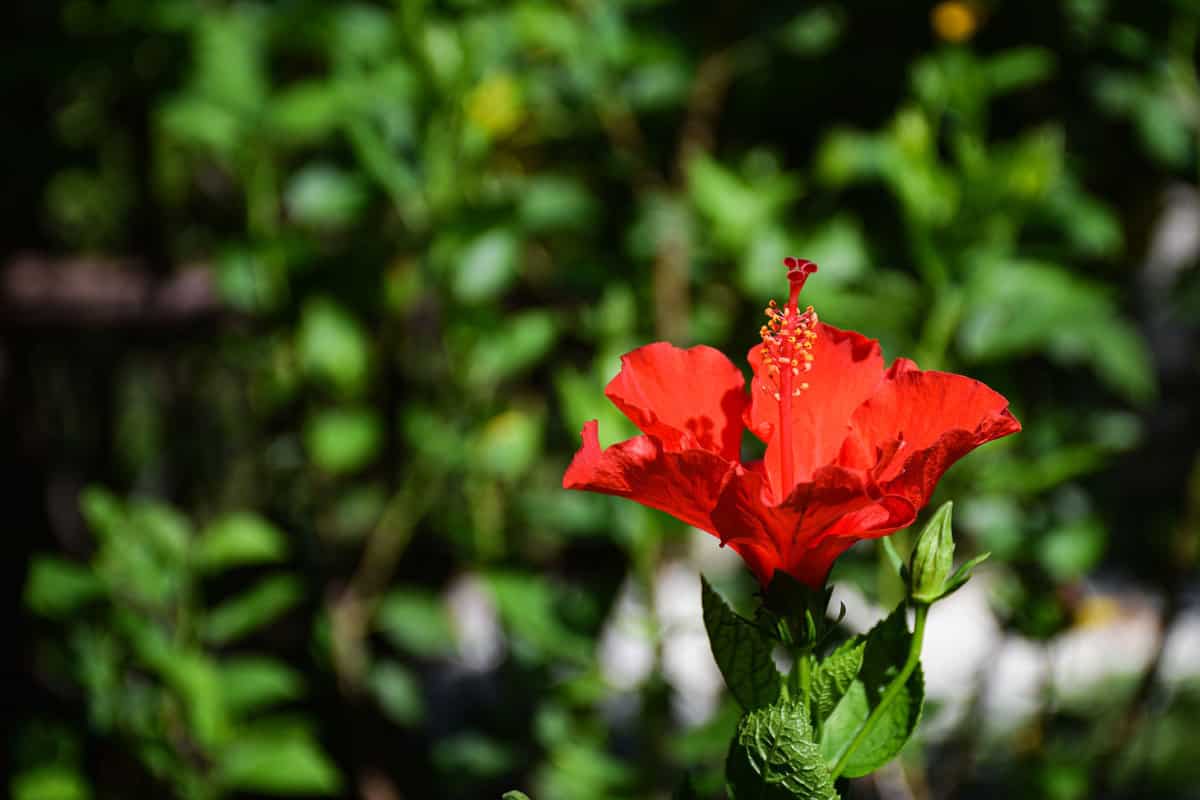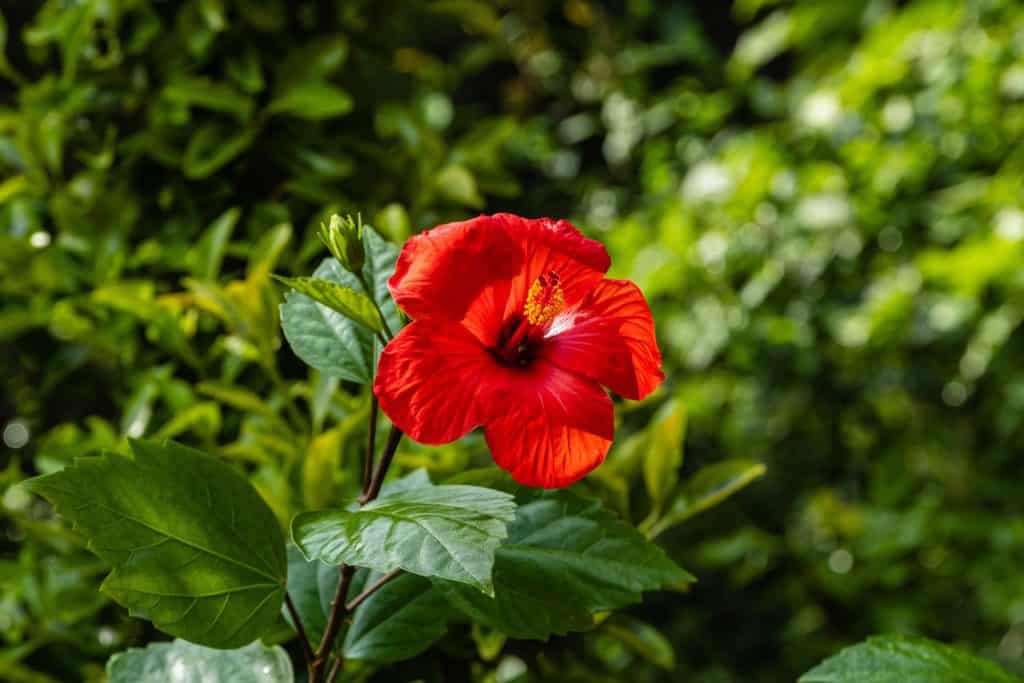Are you excited about adding hibiscus to your garden but concerned about the potential for invasive roots?
While some plants can cause damage to pipes and other structures, hibiscus root systems are generally not considered invasive.
Hibiscus plants have a combination of short, shallow roots and taproots. The roots spread from the main part of the plant with new shoots developing from the roots, but one root connects those spreading roots to the main part.

While these roots can spread outwards, they are not known for causing damage to nearby structures or invading other areas of your garden.
If you're still concerned about the potential for invasive roots, choosing the right type of hibiscus for your garden is essential.
Some varieties, such as the rose of Sharon, are classified as invasive species in certain areas.
By researching and selecting the right variety for your location, you can enjoy the beauty of hibiscus without worrying about invasive roots.
The Hibiscus Roots
Hibiscus roots are classified as spreading, which means they move outward from the original crown of the plant as they grow.
New shoots develop that are separate from the crown and have their own roots while attached to the main plant by at least one root.

The roots of hibiscus plants are not considered invasive, but they require a lot of space to grow.
This means you should plant your hibiscus in an area with plenty of room for the roots to spread.
When planting your hibiscus, be sure to dig a hole at least twice as wide as the plant's root ball.
This will give the roots room to spread out and establish themselves. Once your hibiscus is planted, water it deeply and regularly, especially during the hot summer.
Factors Influencing Invasiveness
There are several factors to consider when it comes to the invasiveness of hibiscus roots.
Here are some of the most significant factors that can influence the invasiveness of hibiscus roots:
Soil Conditions
The type of soil in which hibiscus is grown can significantly affect the invasiveness of its roots.
If the soil is too loose or sandy, the roots may have difficulty establishing themselves, which can limit their invasiveness.
On the other hand, if the soil is too compact or heavy, the roots may become too aggressive and invasive, causing damage to nearby structures and plants.
It is essential to ensure the soil is well-draining, fertile and has the right pH level between 5.5 and 7.0 to promote healthy root growth.
Climate and Weather
The climate and weather conditions in which hibiscus is grown can also play a significant role in determining the invasiveness of its roots.
The roots may grow more aggressively in areas with high rainfall and humidity, seeking moisture and nutrients.
In contrast, the roots may become less invasive in areas with low rainfall and drought as they struggle to survive in dry conditions.
Plant Variety
The variety of hibiscus being grown can also influence the invasiveness of its roots.
Some varieties of hibiscus have more aggressive root systems than others, which can lead to more invasive growth.
Here's a list of the known hibiscus plant varieties:
- Chinese hibiscus
- Rose of Sharon
- Swamp hibiscus
- Hardy hibiscus
It is essential to research the specific variety of hibiscus being grown and to choose a variety that is less likely to become invasive.
Regularly pruning the roots can help prevent invasive growth and keep the plant healthy.
Managing Invasive Hibiscus Roots
If you're worried about your hibiscus roots becoming invasive, there are a few things you can do to manage them. Here are some tips:
- Plant hibiscus in containers: One way to keep hibiscus roots from spreading too far is to plant them in containers. This way, you can control the size of the plant and keep the roots contained in one area.
- Use root barriers: Another option is to use root barriers. You can place These physical barriers in the ground to prevent roots from spreading too far. You can buy root barriers at most garden centers or online.
- Monitor the growth of your hibiscus: Keep an eye on your hibiscus plant and watch for any signs of invasive growth. If you notice roots spreading too far, take action to manage them before they become a problem.
Impact on Other Plants
You may wonder if planting hibiscus in your garden or yard will hurt nearby plants. While hibiscus roots are not necessarily invasive, they can still impact other plants' growth.
Hibiscus can affect other plants through competition for water and nutrients. Hibiscus has a shallow root system that can spread out quite far from the plant, which means it may absorb more than its fair share of these resources. This can lead to stunted growth or even death of nearby plants.
Another way in which hibiscus can impact other plants is through shading. Hibiscus plants can grow quite tall, and their leaves can block out a significant amount of sunlight.
This can be detrimental to other plants nearby that require full sun to thrive.
It's important to note that not all plants will be negatively impacted by the presence of hibiscus.
Some plants may be able to coexist with hibiscus without issue, while others may struggle. It's essential to consider the needs of all plants in your garden or yard before deciding to plant hibiscus.
In Closing
When planting hibiscus, it's essential to choose the right spot.
Hibiscus loves bright conditions, so full sun is often best, but filtered sunlight is better in the south's intense, dry heat.
To keep your hibiscus healthy, it's vital to care for them properly. Regular watering, fertilizing, and pruning will help keep your hibiscus thriving!
Additionally, watching out for common pests that feed on hibiscus, such as aphids and spider mites, is essential.
Well, hibiscus is an easy-to-grow, long-lived plant that adds a touch of tropical beauty to any garden.
To learn more about hibiscus plants, read these articles:
